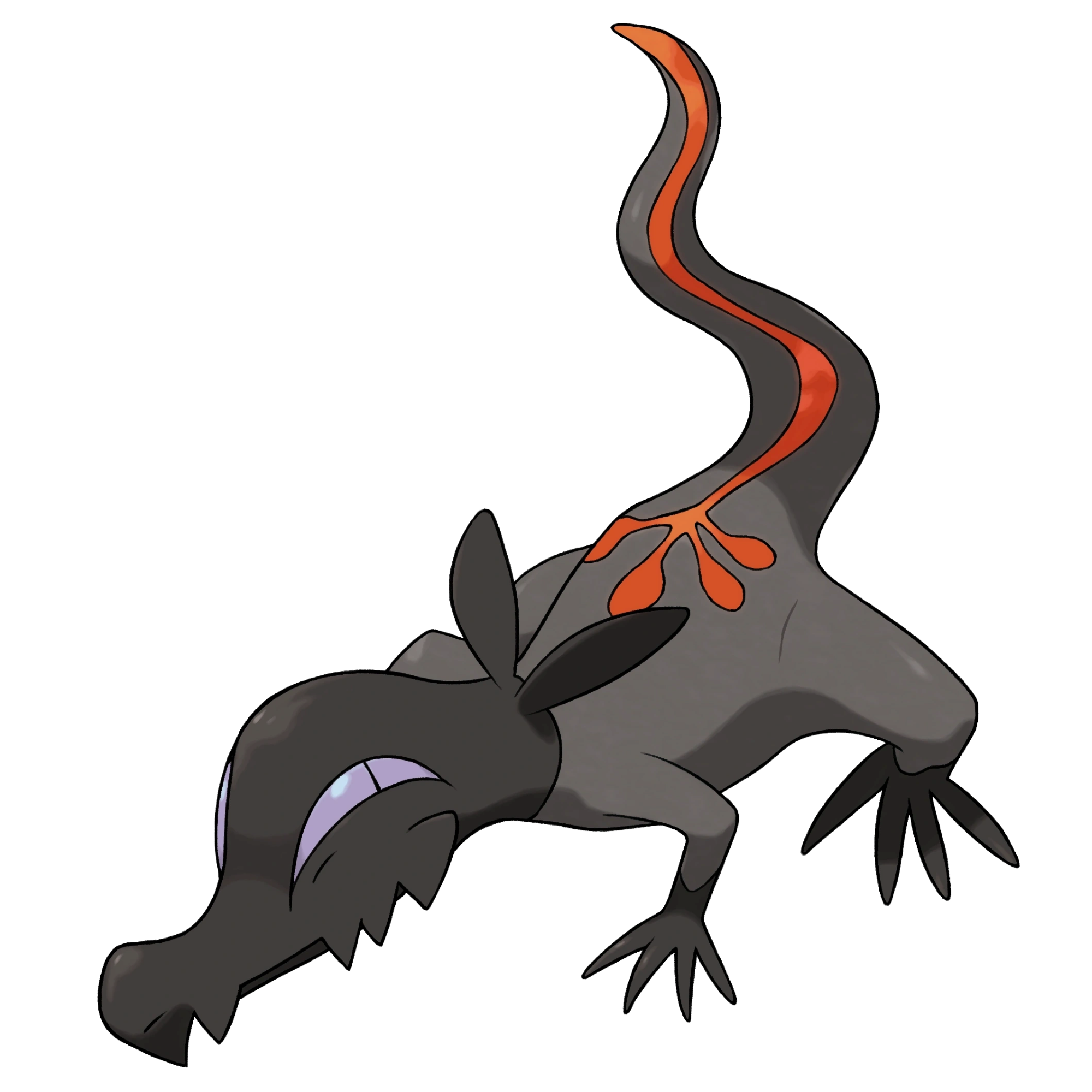Salandit Facts for Kids
Salandit is a small, lizard-like Pokémon that is known for its toxic properties and habitat in warm, volcanic regions.
View Article For:

Related Articles
Introduction
It is a Poison and Fire-type Pokémon that resembles a small lizard. Salandit is known for its sneaky and crafty nature, often using its special abilities to trick other Pokémon! You’ll typically find Salandit in the Alola region, which is based on the Hawaiian Islands. 🏝
️ This Pokémon is often seen basking under the sun and can be quite fast when it needs to escape from danger!
Cultural Impact
It appears in various Pokémon games, merchandise, and even the Pokémon anime series. Kids love Salandit for its cute design and unique abilities. It has also appeared in Pokémon trading cards, which fans collect and trade! 🃏
This little lizard has become a beloved character, teaching trainers about teamwork, friendship, and strategy.
Behavior And Diet
It loves to sneak around and sometimes even plays tricks on other Pokémon. When it comes to food, Salandit eats insects and small animals, and it even uses its poisonous gas to catch its dinner! 🐜
Its diet helps it grow strong and prepares it for its evolution into Salazzle, which is an even more powerful Pokémon. Salandit usually travels in packs, allowing them to share food and protect each other from larger predators!
Interesting Facts
This ability allows it to poison opponents that are normally resistant to poison! Also, Salandit is one of the few Pokémon that can evolve into a gender-specific form, meaning only female Salandit can evolve into the powerful Salazzle. 🌟
Salandit is also known for its mischievous behavior, and it can sometimes be found lounging in the sun, soaking up rays for energy!
Role In Ecosystems
As both a predator and prey, it helps keep the insect population in check while also being a food source for larger Pokémon. Salandit’s ability to use its poisonous gas helps it survive and hunt better. Its cleverness ensures that it remains safe from potential threats, contributing to the balance of its environment.
Conservation Status
However, in its home region of Alola, many Pokémon face threats from habitat loss and human activities. It’s important for trainers to care for their Salandit and protect their habitats! Everyone can help by keeping the environment clean and respecting nature. Plus, trainers can spread awareness about protecting all Pokémon habitats so Salandit and its friends can thrive!
Habitat And Distribution
You can find it in places like the rocky cliffs or sandy spots of the Alola region. Salandit’s favorite place is the warmer climates where there is tons of sunshine. ☀
️ This Pokémon enjoys living in groups with other Salandit, and they often stick together to hunt and play. They are very rare to find, so you might have to search high and low to catch one in the wild!
Physical Characteristics
It has black skin with a cute pink underbelly. One of the most unique features of Salandit is its long, thin tail that is shaped like a flame! 🔥
Male Salandit have a special skill called "Corrosion," which allows them to poison other Pokémon, even those who are normally immune. Salandit is about 2’ long (around 0.6 meters) and weighs approximately 11 lbs (5 kg). It may be small, but it has big dreams of evolving into a more powerful Pokémon!
Evolutionary Relationships
This evolution can only happen if the Salandit is female! Salazzle is a monstrous improvement, becoming stronger and gaining new abilities. 🎊
In its evolution, Salandit transforms from a sneaky little lizard to a sizzling, powerful creature that can control flames! Evolving helps Pokémon reach their full potential, and Salandit is no exception; it aims to grow and become a leader of the pack!
DIY is a humongous library of
activities and courses for kids.
Curious?
Gallery of
Did you know?
🔥 Salandit is a Poison/Fire-type Pokémon introduced in Generation VII.
👶 Salandit evolves into Salazzle when it is female and reaches level 33.
🐉 Salandit has a unique ability called Corrosion, allowing it to poison Poison-type Pokémon.
👅 Salandit uses the toxic secretions from its body to attract prey.
🌿 It resides in hot, rocky regions and prefers dry environments.
⚗️ Salandit is known for its small size, measuring only about 2 feet long.
🥵 Salandit is able to breathe fire and produce toxic gas to fend off predators.
💔 Only female Salandit can evolve into Salazzle; males cannot evolve.
🦸♂️ In battles, Salandit's speed stat is quite high, making it a swift attacker.
⚛️ Salandit's Pokédex number is #758.


